Feral cats are those that live outdoors largely without human interaction. Feral cats are not socialized, which means they usually try to avoid human interaction or react toward humans with fear or aggression.
Although feral cats may roam singly or in pairs, they often form colonies—groups of cats living together outside or in or around homes, businesses, or abandoned buildings.
Cats living in feral cat colonies are often underweight, unhealthy, and breeding at an alarming rate, which increases the colony population and adversely affects the cats’ quality of life.
Also Read: What Is The Difference Between A Stray Cat And A Feral Cat?
Feral cat colonies can become a nuisance to nearby humans due to the cats’ urine-marking behavior, loud catfights or mating, sick or dying cats hanging around, and predation to local birds and other wildlife, as well as the cats’, being a breeding ground for fleas, ticks, and other parasites that can transmit disease to outdoor cats, other pets or people.
Whether you call them feral cats, stray cats, free-roaming cats, neighborhood cats, or community cats, unowned cats living in groups outdoors stay healthier and happier when humans help care for them. It’s not uncommon for cat lovers to notice feral cats.
If you feel moved to help them, you can volunteer your time to provide the colony some care, which helps both the cats and their human neighbors.
Ways You Can Help Feral Cats
Feral kittens can be successfully socialized and adopted into pet homes if they are taken young enough.
If you know of a single feral cat or colony of community cats in your area, you can provide animal care. Kind human caretakers can help feed and water the cats, provide extra shelter (especially in the winter), look after their living area and facilitate trap-neuter-return (TNR) efforts to control population growth in the colony.
Caring for one or two feral cats living in or around your property is somewhat simple. Caring for larger colonies of cats is a bit more work. Several national animal welfare groups offer education and assistance to people who care for feral cat colonies, including Alley Cat Allies, the American Society for the Prevention of Cruelty to Animals, the Humane Society of the United States, and the Stray Cat Alliance.
According to Alley Cat Allies, some of the most helpful things a colony caretaker does for community cats include:
1. Trap-Neuter-Return
Trap-neuter-return is a humane way to manage colony size and reduce cat overpopulation.
Possibly one of the most important parts of caring for a feral cat colony is assisting with trap-neuter-return of the colony members. TNR programs involve humanely trapping feral cats, taking them to a veterinarian for spaying or neutering (and often vaccines, deworming, or other medical care), then returning the cat to the colony.
Check out Dr. Sarah Wooten’s in-depth video discussion about The Truth About Spaying and Neutering Cats: A Complete Guide.
This crucial step ensures the cats can no longer breed and contribute to pet overpopulation. TNR is also a good idea for feral cats living alone since feral cats may roam to breed. Feral kittens can also be trapped, given vaccinations, spayed or neutered, and socialized with humans, and adopted into pet homes if they are captured young enough before their socialization window closes.
TNR is a bit of a new concept for unowned community cats. In decades past, feral cats were simply trapped and euthanized since they are too wild to be adopted as pets. TNR is much more humane than euthanasia.
It curbs the feral cat population with spay/neuter while allowing the cats to live out their natural life spans. Local animal shelters, animal control, and/or cat rescue organizations may be willing to help your TNR efforts by loaning humane traps and offering free or low-cost spay and neuter services to the cats you trap. Read more about TNR here.
2. Providing Food and Water for Feral Cats
Feed the colony at scheduled times and pick up leftovers so as not to attract insects and wildlife.
Although feral cats will forage and hunt for food, feeding them regularly can help them stay healthier and also curb nuisance behaviors like rummaging through trash cans and dumpsters, and killing birds, squirrels, and other wildlife.
Rather than leave cat food out all the time, which will end up full of ants and other insects and may draw raccoons and other wildlife, serve food out at regular mealtimes (morning and evening). For larger groups of feral cats, set up “food stations” and feed as much as all the cats will consume within about 15 o 20 minutes. It may take time to gauge how much the colony needs. Pick up all leftovers after 30 minutes.
You can feed canned or wet cat food. Wet food is nutrient-dense and offers benefits like added moisture and higher protein content. Dry food is cheaper and less likely to spoil if it isn’t all eaten right away. If you’re feeding a large colony, you might ask friends, family, or neighbors for food donations to help offset the cost.
Refresh water bowls twice a day so the cats always have fresh, clean water to drink. In winter, fill with warm water or use heated bowls so the water doesn’t freeze. Alley Cat Allies offers tips for caring for community cats in winter here.
3. Providing Shelter to Feral Cats
Straw is recommended as bedding inside the cat shelter as it provides warmth and stays dry even in damp conditions.
Feral cats that are living out in the open can benefit from a shelter that provides shade in summer, warmth in winter, and protection from rain, wind, and snow.
You can build cat shelters from wood or repurpose other things like large plastic storage containers flipped upside down with a hole cut in the side for an entryway. Straw is recommended as bedding inside the cat shelter as it provides warmth and stays dry even in damp conditions.
4. Monitoring Feral Cats
At the time of the spay or neuter, the vet removes the tip of one ear so people know the cat has been fixed.
Keep an eye on individual cats so you can aid if they become sick or injured. This is good for each cat and also the colony as a whole, especially when cats develop communicable diseases.
Some colony caretakers keep a journal that identifies each cat with a physical description (or photo), sex (male or female), whether they are spayed or neutered, past injuries or illnesses, and any health concerns.
If a cat needs help, reach out to your veterinarian who may be able to provide medication or advise trapping the cat and bringing it in for treatment.
Improve Quality of Life for Feral Cats
Providing basic care for feral cats improves their quality of life and prevents them from becoming a nuisance to the community.
Caring for feral cats is humane and beneficial for the cats and your community. When feral cats live in a managed colony, nuisance behaviors are fewer, and the cats can coexist more peacefully with their human neighbors. Human caregivers even help feral cats live longer, healthier lives.
The ASPCA estimates that feral cats living on their own without care have an average life span of just 2 years, but feral cats being looked after by a human caretaker can live as long as 10 years.
Frequently Asked Questions
How can you tell if a cat is feral?
Feral cats act more like wild animals than pet cats. Most feral cats avoid human contact, running away, hissing or growling if approached. Do not try to handle a feral cat or you may be bitten or scratched.
How do you take care of a feral cat?
You can help make a feral cat’s life better by providing food and clean water, having it spayed or neutered, and monitoring its health so you can get it veterinary care if it becomes sick or injured.
Can you domesticate a feral cat?
Adult feral cats can’t usually be domesticated, though there are cases of exceptionally friendly feral cats enjoying close contact with humans. Feral kittens can be successfully socialized to humans if they are taken at 8 weeks or younger.
What is the lifespan of a feral cat?
According to the ASPCA, feral cats living on their own without care have an average life span of just 2 years. Feral cats being looked after by a human caretaker can live as long as 10 years.
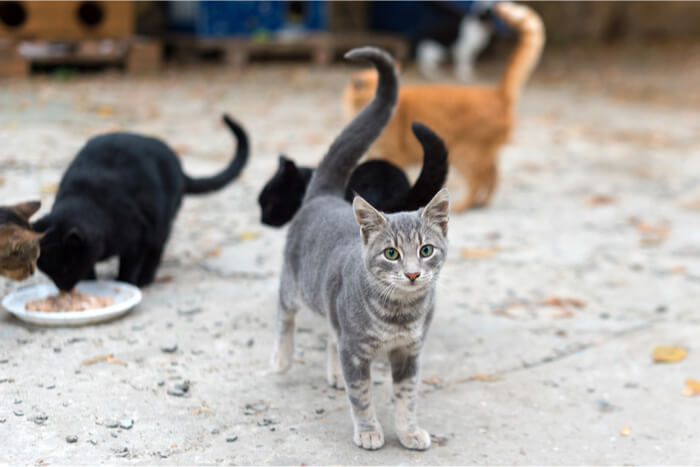
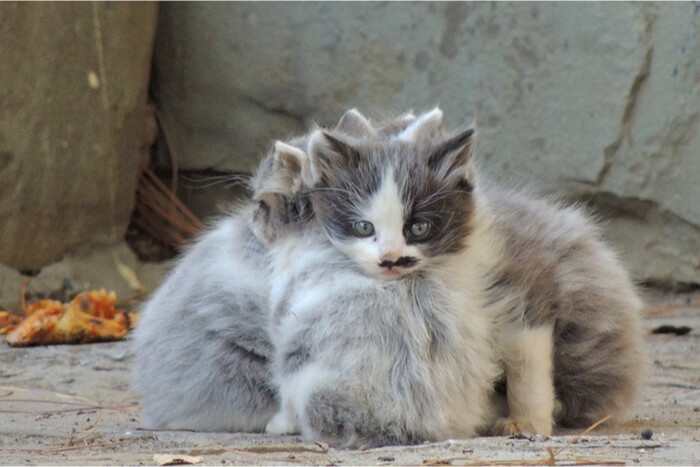
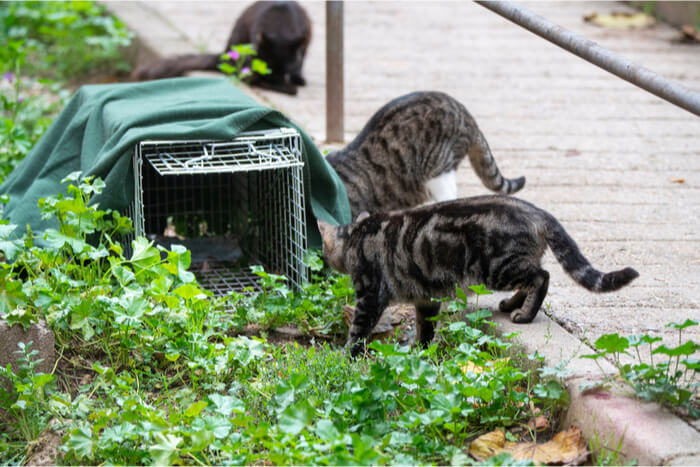
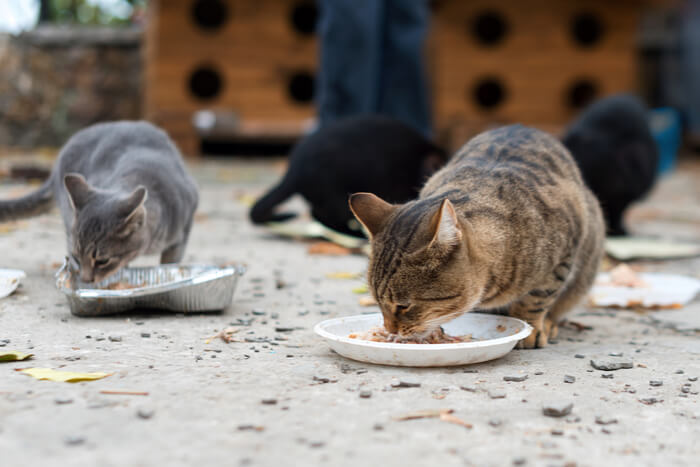
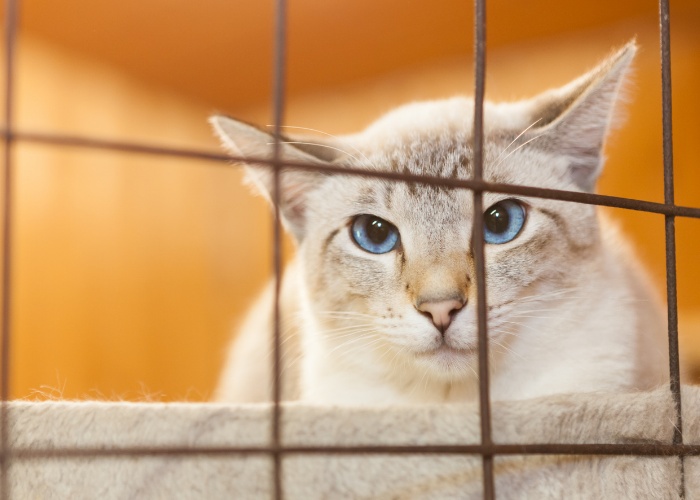
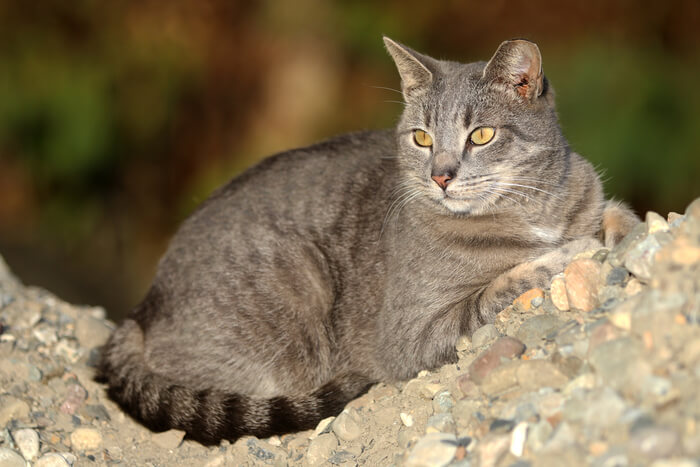
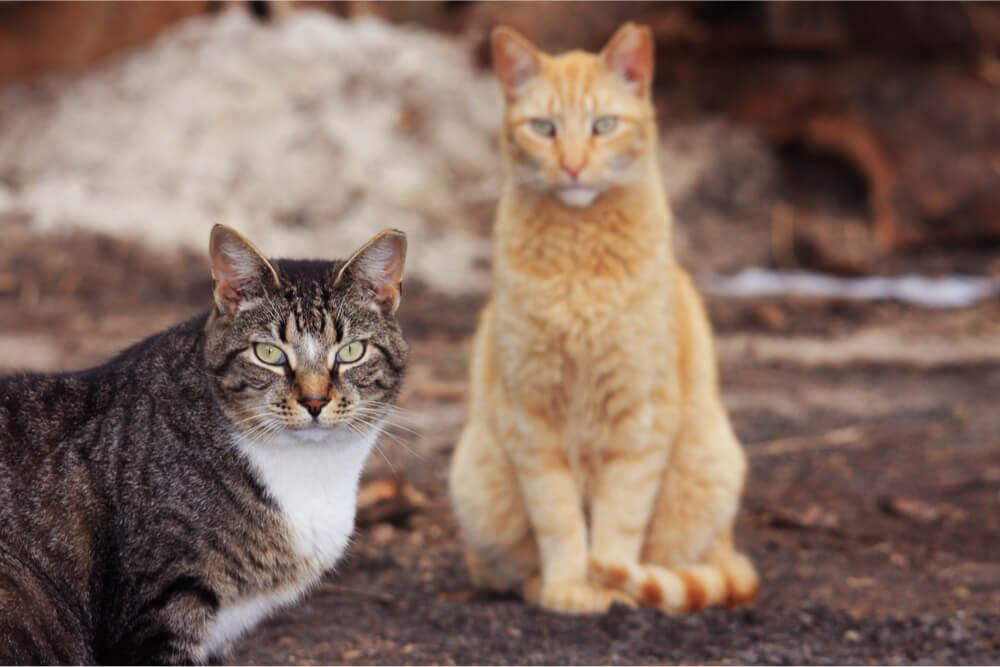

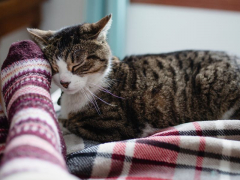
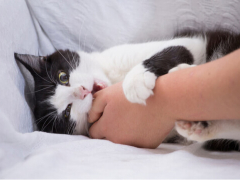




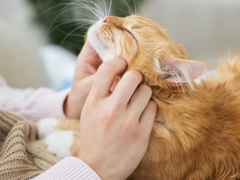
Jackie,
Thank you so much for your above article on feral cats. We think the cat who comes through our yard is feral. Your article was very helpful. Over several months, the cat who we have named Coal, (she/he is a dark calico.) has developed some trust in us. We can come to within 6 feet of her. We have not fed her in case she really does have a home. We really don’t know if she is a male or female. Coal does not have any testicles and has never been pregnant during the 6 to 9 months she has been coming through our yard. My next step is to put a couple of photos of her on our Next Door Neighborhood Account and see if she does have a home in our neighborhood or city for that matter. If not, we will take care of feeding and watering her, having an outdoor bed for her that is protected from the elements. We will trap her and get her vaccinated. Best Regards, Penny
Use to be that there was a program in which you could get cats/dogs spayed/neutered for $20 thru local program once a years, but think it hasn’t happened for 10 years. We had an outside cat that one day came inside to have kittens. We have since had her and 6 kittens fixed, but with cost between $300 to $400 each for the vaccines, checkups, and spay/neuter. .
There are a few cats in area, but we currently have 10. Two more little kittens that have been checked and vaccinated, but not old enough to be spayed, but scheduled. Would be nice to have that program back to stop the cycle.
thank you very much for your kind work with feral cats and kittens ,and for paying for all those costs You and your family have kind hearts 🙂
I have been feeding A ferral cat for way over year. Try to make comfortable as possible. It does wait for food daily. Trapped today and took to see if chipped, but did not work out. Have A person that had trapped him and tried to do this, if turned over to county rescue if turns up sick , and they can’t help him they might put him down, needs to be shaved very bad too. To cold now. Or return it to my place ( he.lives in back of my property) and just let him live his life out the best he can. Seems like a pretty resilient cat. Thank you June
Hello there, I apologize for the late reply! I hope this feral kitty is doing well now.
I’m a Ferral Cat Caretaker in Las Vegas NV. My colony is quite large about 20 or so cats. I think they have a Kitty Telegraph to point them to my house. I am licensed with Animal Control. One of the kittens that was waiting to be nuetered had 5 kittens which she hid at a close by home with a cluttered back yard. She left her kitties and was at my house & was trapped & taken to be nuetered. She was pregnant & that pregnancy terminated. So, 3 days later she is returned. We see her on camera bringing her kittens one by one to the colony. She stayed with them & nursed them for another week, then she disappeared. So, we have been feeding the kittens kitten food that has milk in it. All the organizations are at capacity so looks like we will be keeping these kittens in the colony if I can’t find them a home. How many weeks or how much do they need to weigh to get nuetered? That wasn’t mentioned in your article. It is really costly having so many to feed. There are so many Ferals that when you try for tnr your on a waiting list & it took me 5 months this last time to get help. I’m a senior on Social Security and since the Pandemic the price of cat food has increased too much. Poor cats rarely get wet food.
Hi Marsha, thank you for commenting, and I apologize for taking a while to get back to you! Generally, it’s recommended that kittens be spayed or neutered around 4-6 months of age, but some will undergo early age neutering around six to eight weeks.
All the “walk ups” at my house in the woods have been spayed and neutered. Most are very socialized to me and the others. Please tell me that the happy colony will limit the members. It seems the strays and ferals never stop coming! I am going broke. They have food, shelter and love and aren’t leaving! I care for all of them but……
I have not seen any cat colonies around my neighborhood. There have been a few cats in the past that I have seen but not recently. My question is if I was to provide a shelter, food & water in the winter, how will I know if a cat is getting it?
Good question. In some cases, you can’t know. A trail cam or outdoor security camera may be useful, but other than that, there’s no real way to guarantee that cats are getting the food and not squirrels, raccoons, and other curious critters.
For anyone who wishes to make a shelter for a cat colony, you can go to YouTube on your TV or computer. Input “how to make a cat shelter” – there are more than one. I liked the one which uses a styrofoam cooler placed upside down inside a large plastic tote with holes for doors, and packed between the two with straw (not hay). I used a Dremel tool to cut out the two doors, and placed an old towel on the floor of the shelter after adding cardboard as a buffer against the cold ground. Replace the top of the plastic bin and place it where the rain won’t pour in.
I bought everything at Walmart, the straw being in the Pet section by rabbit and small pet bedding materials.
It is a good act of kindness.